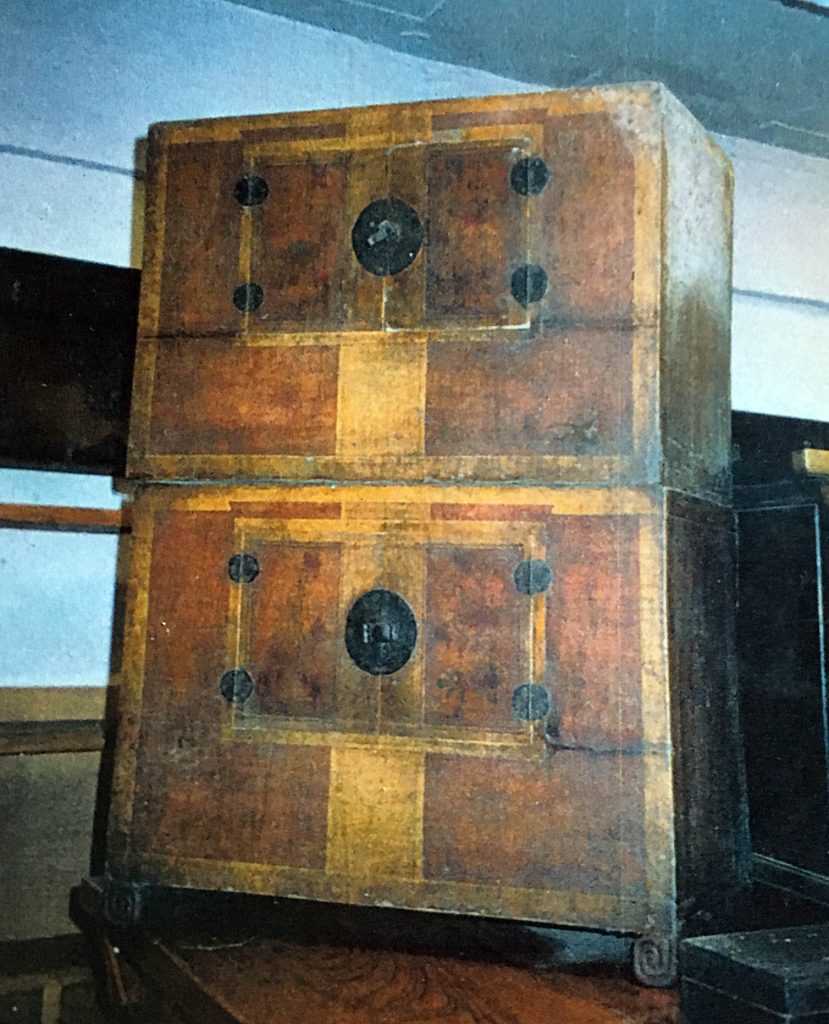
1860; paulownia wood, oiled rice paper; Kang Won Do province. Certified.
This stacked chest is made of paulownia wood covered with cut rice paper then oiled. This wood is quite light, known to withstand temperature changes, and is heavily grained but the grain is without contrast in coloration so it could be quite dull. Covering this stacked chest with pieces of delicate rice paper and decorating the small door panels with painting then coating the entire piece with perilla oil was a brilliant move to make this otherwise subdued piece of furniture stand out. With age, the colorful paintings on the doors have become muted, the designs hard to recognize. The varied colors of the cut paper on this stacked chest, however, give it a very arresting look. The original simple iron lock-plates and hinges complement this aged piece. The bottom unit ends with angular scrolled feet.
Painted oil paper covered furniture is quite rare. It was labor-intensive and was done usually on a chest given away as a wedding present for the bride to keep her small clothing items such as socks and clothing wraps. The light paulownia wood makes it easy to move around. However, such delicate pieces were hard to survive the many wars and conflicts Korea faced in its history. This painted rice paper chest is certified as rare by a Korean Professor of Korean History and Antiquity in the 1900s.